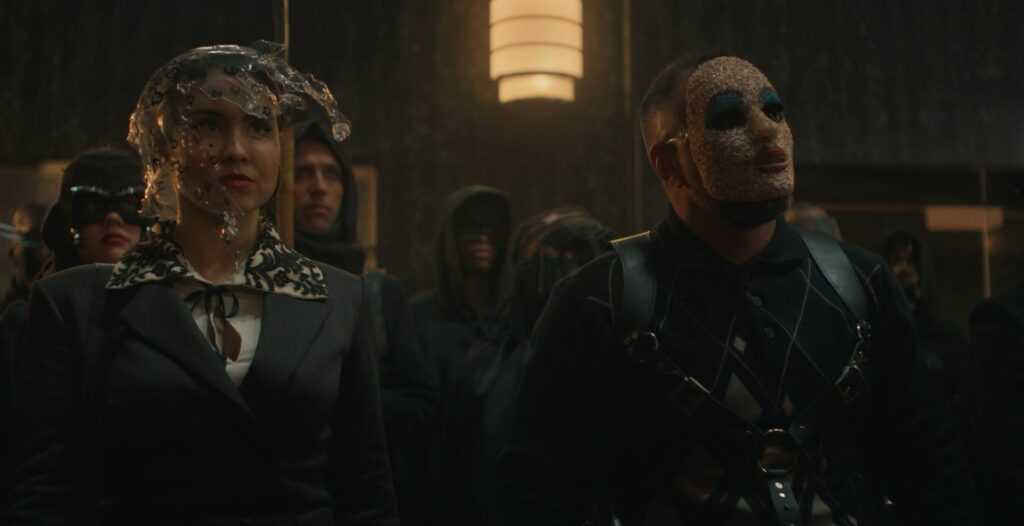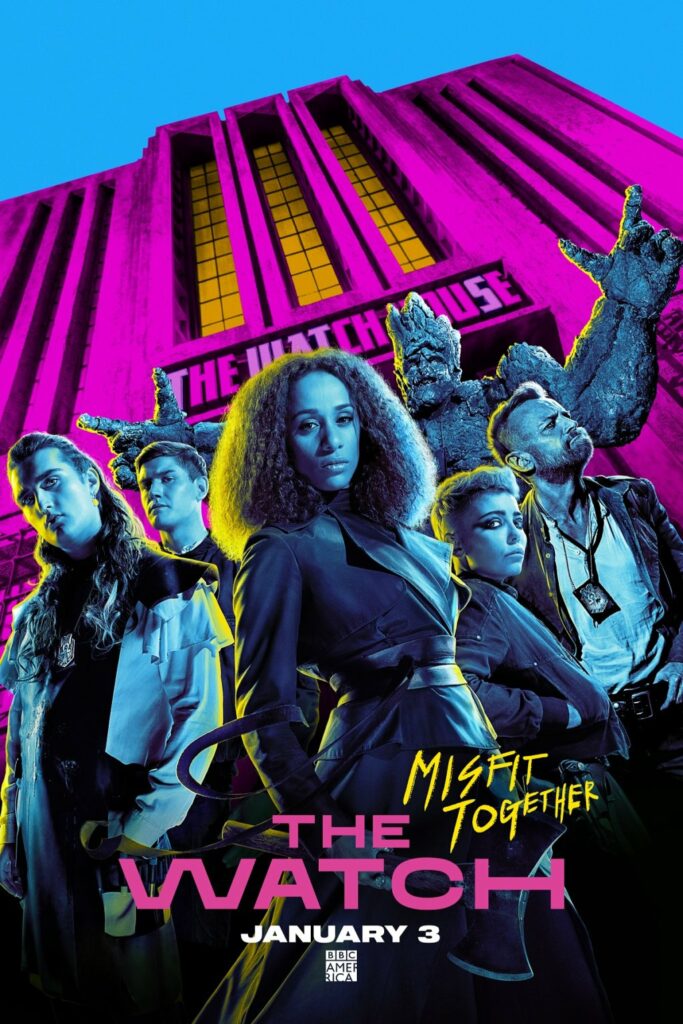#Pratchat52 – A Near-Watch Experience
This month, we’ve put down the books and picked up the remote control! Guests Patrick Lenton and Fury join us to discuss a show “based on characters created by Sir Terry Pratchett”: 2021’s The Watch.
Sam Vimes was a street kid in Ankh-Morpork who joined the Watch to kill its Captain and free the imprisoned members of his gang. But he had a change of heart. Twenty years later, he’s still there – a washed-up drunk of a Captain, whose force of misfits have almost nothing to police since the criminal Guilds were all legalised. But during his latest assignment – to find a missing library book – he sees someone who died twenty years ago. Soon the Watch is up to their necks in dragons, ancient artefacts and magical experiments gone wrong, and it’ll take all their cunning and heart to get to the bottom of it…plus a little help from noblewoman-turned-vigilante, Lady Sybil Ramkin.
After a long road through development hell, initially with Pratchett himself at the helm, The Watch eventually emerged as a surprisingly “punk rock police procedural”; a brightly-coloured Dungeon-punk explosion which wears its queerness on its sleeve. The Watch remixes characters and concepts from the books into something so different that fans and friends of Pratchett quickly disowned it. The critical reaction was middling at best, and it took six months for it to be released on Pratchett’s home soil.
But is it any good?
Could you divorce yourself from the source material? If so, does The Watch work on its own terms? Is it funny? Is it comprehensible? Is watching it a good time? Which bits got up your nose, and which did you love? Who was your favourite character, and why was it Cheery? And given we barely scratched the surface of talking about it this episode – should we do a bonus mini-series, discussing it episode by episode? Let us know by joining the conversation, using the hashtag #Pratchat52.
Podcast: Play in new window | Download (Duration: 2:18:13 — 63.7MB)
Guest Patrick Lenton is currently Deputy Editor: Arts + Culture for The Conversation, and was previously a senior editor at Junkee. He is also a freelance writer whose work has spanned journalism, theatre, fiction and comedy. His most recent short story collection is Sexy Tales of Palaeontology from Subbed In, and he writes the newsletter All the Hetereosexual Nonsense I Was Forced To Endure with Rebecca Shaw. You can find Patrick on Twitter as @PatrickLenton, and his handy LinkTree will help you find his other stuff.
Guest Fury is a writer, illustrator and performer who previously appeared on Pratchat in #Pratchat19 (Soul Music) and #Pratchat29 (The Last Continent) – our last in-person episode, recorded in the before times! Their live multi-disciplinary show Gender Euphoria toured Australia in 2019 and 2020, and their book I Don’t Understand How Emotions Work is (probably) still available. You can find out more about them at furywrites.com, or follow them on Twitter as @fury_writes. Their first TV show, Crazy Fun Park, is currently in production and scheduled to premiere on ABC ME and ABC iview in late 2022.
As usual, you can find notes and errata for this episode on our website.
Next month we’re heading to one of the books that (sort of) provided a big chunk of inspiration for The Watch, and a fan favourite, frequently topping rankings of the Discworld series: Night Watch! Meet the original Carcer Dun, Jocasta Wiggs, young Sam Vimes, and – eventually – Young Sam Vimes… Send us your questions via the hashtag #Pratchat53, or via email to chat@pratchatpodcast.com.
Want to help us get to the end of our six(ish) year mission and read every Pratchett book – and more? You can support us with a tip, or a subscription for as little as $2 a month, and that’s cuttin’ our own throats! See our Support Us page for details.


